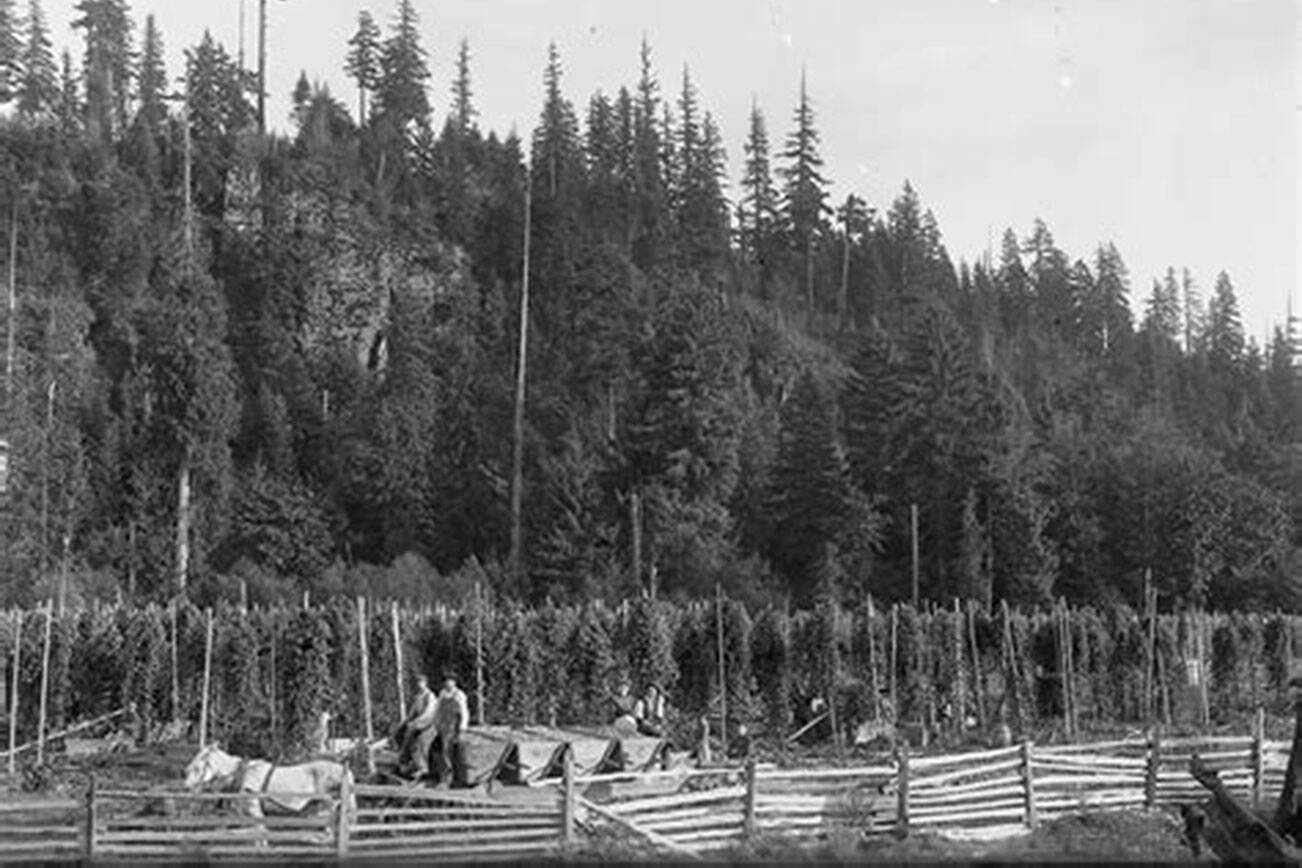This month’s local history column will be the third and last segment on the Nielsen family. The Nielsen’s came to Enumclaw about 1895 from Denmark. Kathrine Marie (Nielsen) Basteyns wrote her family’s story which I have been sharing with you. My source is the Enumclaw Historical Society Museum. The KCLS Enumclaw Library also has a copy in the Pioneer section.
What we take for granted today required hours of work a century ago. Kathrine’s story of her family brings our own lifestyles into clearer focus.
Since there was no indoor plumbing, water came from wells dug by hand on the property. The Nielsen family had four such wells. The water supply for the house came from a well near the back porch. There was a rope on a pulley onto which the bucket was snapped and lowered into the well.
On laundry days, the water bucket was carried into the house and the water was heated in a boiler on the stove,, using wood chopped by hand. It took numerous trips to the woodpile to keep the stove hot. A laundry bar of “Crystal white” was dropped into the water and allowed to melt. The “washing machine” itself was a wooden tub.
After the clothes were washed, the white clothes were put back into the boiler and heated to a boil. After the colored clothes were washed, they were taken out and the white clothes were put back to be rinsed twice. Then the whites were “blued”, adding indigo to the water to whiten them with a blue hue.
Then the colored clothes were rinsed again and hung to dry. They also had a handwringer made up of two rollers which squeezed out the excess water. Hopefully, the clothes were not dropped or the whole washing cycle would have to be repeated.
A second example of chores was the making and baking of bread. Kathrine’s mother made two kinds, white and rye. “Magic Dry Yeast” was mixed into the dough to cause it to rise. Her mother also made coffee cake and buns using what Kathrine called “sweet yeast dough”. These treats were baked in the oven. Butter, sugar, and cinnamon were added to them and they were served with coffee. Cookies were also made, but not many cakes and few pies. Pies would have to wait until Kathrine got old enough to make them herself.
Their butter came from churning their own cream in what Kathrine called a “wooden stomper” which operated by stomping down on a pedal that turned the cream into butter.
Kathrine’s mother canned all kinds of fruit and juices which were used for desserts or to flavor other foods. There were no instant cereals. Everything was bought in great quantities; flour came in barrels equal to two one hundred-pound sacks. Oatmeal and sugar were purchased in 100-pound sacks.
Meat was added to the diet by the slaughtering and butchering pigs and cows. The meat had to be salted to be preserved. Some of the meat was turned into sausages. Pigs were usually slaughtered three and four at a time. Some of the salted meat was smoked and turned into bacon and ham. Lard saved from the butchered pigs was used for cooking. Much of the canned and salted food was stored in what Kathrine called a “root house”, a hole dug in the ground that was covered with a sod roof and lined with dirt to act as insulation. It kept the food cool and never froze during the winter.
Ironing was done by heating the iron on the stove. It was heavy and was often either too hot or too cold. Cheese was handmade. Light came from kerosene lamps that had to be cleaned and filled, often a messy and smelly job.
Eventually, these toilsome chores were replaced. Electricity ended the need for kerosene lamps and heating laundry water on a stove. Electric irons replaced stove-heated irons. Indoor plumbing brought an end to the outhouse and bathing in a wooden tub. Electric washing machines ended that laborious chore. Refrigerators and freezers replaced the root house.
We can drive to the store today. We don’t need to bake bread or churn butter and cheese or slaughter animals for meat, use outhouses, or heat water to put into wash tubs to bathe in.
Examining the past helps us to gain perspective on the present. No matter what the era, though, we find ways to consume our time.


